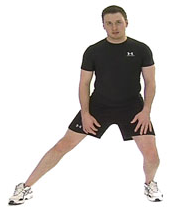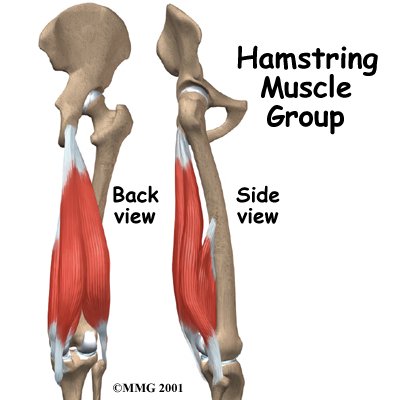Greetings
It is officially Summer and we hope that everyone has the chance to enjoy any of the good weather that might come our way and re-energize yourselves.
While Summer often becomes busy with activities for the children, vacations, projects around the house and the like, keep in mind that strains and sprains heal more quickly and thoroughly when treated soon after the injury. So don't put off coming in to see us too long if you have any injuries this summer. We want to help you get back to your activities as soon as possible.
We were sad to say “Good-Bye” to Alicia Broughm PT who decided to seek out a slower pace in the city. We’ll miss her.
We happily welcomed Jennifer MacKinnon in July as our newest physiotherapist on our team. She comes to us with over 5 years of experience and an interest in hands on techniques and exercise prescription. Jennifer will make a wonderful addition to our work family here.
Look for an announcement for our customer appreciation event in the fall. Join us for some food and fun!
 |
In the photograph above, can you identify this building located in Lower Sackville. Be the 10th caller to dial 865-5749 and you could win a gift certificate for a massage!
Congratulation to the Spring Newsletter winners. Identity of the building portrayed in that issue is the Sackville Public Library.
|
We have recently added over 60 new articles to our patient resource library including the following
Patient Guides:
Featured Article:
Static versus Dynamic Stretching
Stretching is extremely important for anyone who exercises regularly or participates in sports. Stretching also plays a central role in physiotherapy treatment for muscle strains and pulls, as well as other musculoskeletal injuries.
But are all stretches created equal?
Are the stretches that help prevent injuries the same ones that can help treat them?
Preventing Injuries
There are a number of different types of stretching exercises that can help reduce the risk of injury as well as improve overall athletic performance [1]. Two of the most common are known as static and dynamic stretching.
 Static stretching involves reaching as far as you can in one direction and then holding the stretch for 15-60 seconds [2], with 30 seconds being most effective with hamstrings for example [3]. This type of stretching is used to increase the length of the soft tissue and the flexibility of your muscles. Example: touching your toes and holding it.
Static stretching involves reaching as far as you can in one direction and then holding the stretch for 15-60 seconds [2], with 30 seconds being most effective with hamstrings for example [3]. This type of stretching is used to increase the length of the soft tissue and the flexibility of your muscles. Example: touching your toes and holding it.
Dynamic stretching involves a series of movements that work more than one muscle at a time. These stretches utilize controlled body movements like arm and leg swings to gently take you to the limits of your range of motion [4]. They do not involve any bouncing or any jerky movements. Example: moving your arm and shoulder in big circles.
For years static stretching was a mainstay in athletic warm-ups because it was thought to prevent injuries and enhance performance. However, new research has shown that dynamic stretching is much better suited for this task since it increases your core body and muscle temperature, elongates your muscles and stimulates your nervous system to prepare for the responsiveness that your sport demands [1].
Studies comparing static versus dynamic stretching in pre-athletic warm-ups have shown that dynamic stretching helps prevent injuries and boosts performance better than static stretching [5, 6]. In fact, doing static stretches before a big game or key practice session may actually decrease athletic performance for at least an hour afterward by reducing leg strength and power [7, 8].
Static stretching should still be an important part of your training routine, just not before you workout or play a sport. Instead, static-type stretches should be part of an effective cool-down routine following your game or training since they help relax muscles, realign muscle fibers, cool your body temperature and increase flexibility [9].
Treating Injuries
 When muscles are injured, static stretching has been shown to be an important and effective part of rehab. Hamstring injuries are a common athletic injury treated by physiotherapists and require an extended, individualized, well-planned rehabilitation program [10]. Static stretching plays a major part in these programs because it increases muscle flexibility and relieves pain caused by muscle stiffness [11]. In a clinical trial of 80 athletes with hamstring injuries, those who did a more intense static stretching program took significantly less time to regain their full range of motion [12]. It is important to remember, though, that aggressively stretching an injured muscle will only make things worse, so it is important to wait at least 72 hours before starting gentle stretching exercises.
When muscles are injured, static stretching has been shown to be an important and effective part of rehab. Hamstring injuries are a common athletic injury treated by physiotherapists and require an extended, individualized, well-planned rehabilitation program [10]. Static stretching plays a major part in these programs because it increases muscle flexibility and relieves pain caused by muscle stiffness [11]. In a clinical trial of 80 athletes with hamstring injuries, those who did a more intense static stretching program took significantly less time to regain their full range of motion [12]. It is important to remember, though, that aggressively stretching an injured muscle will only make things worse, so it is important to wait at least 72 hours before starting gentle stretching exercises.
Even if you haven't reached the point of injury yet, adults with tight hamstrings also get good results from static stretching. Researchers have reported that static stretching is twice as effective as dynamic stretching for increasing flexibility in non-competitive athletes with tight hamstrings [13].
The Bottom Line
Dynamic stretches are best used as a warm-up before exercise or a sport to prevent injury and boost performance. They are not helpful when your muscles are already stiff or injured.
Static stretches maximize flexibility and are best used as part of a cool down following physical activity. They also should be used as part of a physiotherapy treatment program for specific muscle injuries.
For more information and advice about developing a stretching program that fits your needs and exercise routine, contact one of the licensed, trained physiotherapists at Bedford-Sackville Physiotherapy Clinic Inc.. They will make sure you know what type of stretches to do and how to do them correctly in order to gain the maximum benefits.
References:
1. Frederick GA, Szymanski DJ. Baseball (part 1): dynamic flexibility. Strength and Conditioning Journal. 2001;23(1):21-30.
2. American College of Sports Medicine. Position Stand. The recommended quantity and quality of exercise for developing and maintaining cardio respiratory and muscular fitness, and flexibility in healthy adults. Med Sci Sports Exerc. 1998 Jun;30(6):975-91.
3. Bandy WD, Irion JM. The effect of time on static stretch on the flexibility of the hamstring muscles. Phys Ther. 1994 Sep;74(9):845-50.
4. Thacker SB, Gilchrist J, Stroup DF, Kimsey CD Jr. The impact of stretching on sports injury risk: A systematic review of the literature. Med Sci Sports Exerc. 2004;36(3):371-378.
5. Mann D, Jones M. Guidelines to the implementation of a dynamic stretching routine. Strength Cond J. 1999;21(6):53-55.
6. McMillian DJ, Moore JH, Hatler BS, Taylor DC. Dynamic vs. static-stretching warm up: the effect on power and agility performance. J Strength Cond Res. 2006;20(3):492-499.
7. Fowles JR, Sale DG, MacDougall JD. Reduced strength after passive stretch of the human plantar flexors. J Appl Physiol. 2000;89(3):1179-1188.
8. Fletcher IM, Anness R. The acute effects of combined static and dynamic stretch protocols on fifty-meter sprint performance in track-and-field athletes. J Strength Cond Res. 2007;21(3):784-787.
9. Boyle M. Functional Training for Sports. Champaign, IL: Human Kinetics; 2004.
10. Wiktorsson-Moller M, Orberg B, Ekstrand J, Gillquist J. Effects of warming up, massage, and stretching on range of motion and muscle strength in the lower extremity. Am J Sports Med. 1983;11:249-252.
11. Shrier I. Stretching before exercise does not reduce the risk of local muscle injury: a critical review of the clinical and basic science literature. Clin J Sport Med. 1999;4:221-227.
12. Malliaropoulos N, Papalexandris S, Papalada A, Papacostas E. The role of stretching in rehabilitation of hamstring injuries: 80 athletes follow-up. Med Sci Sports Exerc. 2004;36(5):756-759.
13. Bandy WD, Irion JM, Briggler M. The effect of static stretch and dynamic range of motion training on the flexibility of the hamstring muscles. J Orthop Sports Phys Ther. 1998;27(4):295-300.